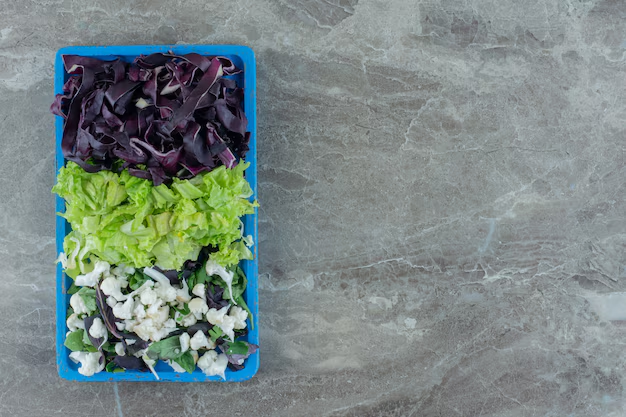Mastering the Art of Storing Green Beans in Your Refrigerator 🌿
Have you ever brought home a fresh batch of green beans, only to find them wilted and unpleasantly soft a few days later? If storing green beans effectively in your refrigerator has been an elusive art, fear not! Keeping these vibrant veggies fresh can be simple with the right techniques.
Understanding Green Beans and Their Storage Needs
Green beans, known for their crisp texture and subtle flavor, can easily lose their appeal if not stored properly. This section will guide you through the essentials of green beans and how understanding their characteristics can help you keep them fresh longer.
The Composition of Green Beans
Green beans are primarily composed of water, which is integral to their crisp texture. The cell walls of these beans are full of water, and maintaining their structure is key to keeping them crunchy.
Ideal Storage Conditions
For green beans to retain their freshness, they require a cool, humid environment. The refrigerator is naturally suited for this, but certain adjustments can enhance its efficiency at preserving green beans.
Prepping Green Beans for Storage
Before you even think about putting your green beans in the fridge, a little preparation can make a large difference in how long they last.
Selection and Inspection
- Choose Wisely: Always start by selecting the freshest beans. Look for a vibrant green color and a firm texture.
- Inspect for Damage: Remove any beans that are bruised, browned, or soft as they can accelerate the deterioration of the rest.
Washing (or Not!)
Expert Tip: Wash green beans just before you are ready to use them—not before storing. Washing can introduce moisture that may speed up the spoiling process. If you’ve washed them accidentally, make sure they are thoroughly dry before proceeding to storage.
Cutting and Trimming
Should you trim the ends before storing? Generally, it’s better to keep them whole to limit exposure and reduce moisture loss. You can trim them before cooking instead.
Storing Green Beans in the Refrigerator
Now that your green beans are prepped, let's delve into different methods to store them effectively in your fridge.
Basic Storage Method
- Storage Container: Use a perforated plastic bag or a reusable mesh produce bag to allow air circulation. This setup helps regulate humidity while preventing moisture buildup.
- Crisper Drawer: Place the green beans in your refrigerator's crisper drawer. This drawer is designed to maintain a higher humidity level than the rest of the fridge, making it perfect for storing vegetables.
Advanced Techniques for Longer Freshness
If you're looking to prolong the freshness of your green beans even further, consider these techniques:
Using Paper Towels
Layer with Paper Towels: Wrap the green beans in a layer of dry paper towels before placing them in a storage bag. The paper towels will absorb excess moisture, slowing down decay.
Vacuum Sealing
Maintain Moisture Balance: Vacuum sealing can be a great way to keep air (and thus oxygen, which leads to decay) from reaching the green beans. This method is especially effective if you plan to store them for an extended period.
Addressing Common Green Bean Storage Challenges
Even when stored properly, certain challenges may arise. Here are practical solutions to common issues.
Wilting and Shriveling
If your green beans start to wilt, it could be due to loss of moisture. Ensure they’re kept in a humid environment within the fridge without adding extra water.
Mold Growth
Mold Alert: If you notice any form of mold, remove those beans immediately to prevent spreading. Mold thrives in wet environments, so check for excess moisture in your storage area.
The Pros and Cons of Refrigerating Green Beans
Understanding the benefits and downsides of your storage choices can help you make informed decisions tailored to your dietary needs and cooking habits.
Benefits
- Extended Shelf Life: Storing in the refrigerator significantly prolongs the life of green beans due to the cold temperature slowing enzymatic processes.
- Flavor Retention: Proper refrigeration preserves their natural, mild flavor and crisp texture, making them more enjoyable when cooked.
Potential Downsides
- Poor Storage Can Expedite Spoilage: Not using the right storage technique can actually speed up spoilage.
- Texture Changes: Over time, prolonged refrigeration can lead to a loss in firmness, a pivotal quality of fresh green beans.
Making the Most of Stored Green Beans
Stored green beans can be a star ingredient in various dishes, reflecting their adaptability. Here are some creative ways to make the most of your stored beans:
Recipe Ideas and Meal Planning
- Stir-Fried Green Beans: Quick and easy stir-fries allow green beans to shine as a crisp and flavorful component.
- Green Bean Casserole: A comforting classic that makes use of stored green beans when you're looking for a more hearty meal.
Incorporating into Daily Meals
Green beans can make a nutritious addition to salads, soups, or as a steamed side accompanying main dishes. Their versatility allows you to integrate them seamlessly into your meals.
A Quick Recap for Optimal Storage
Here's a quick summary to ensure you're storing your green beans like a pro:
- 🥗 Choose Freshness: Prioritize fresh, firm, vibrant beans.
- ✂️ Keep Them Whole: Avoid trimming and wash before use.
- 🥤 Use Dry Storage: Opt for perforated plastic or mesh bags with paper towels.
- 🍃 Crisper Drawer: Utilize your refrigerator’s crisper drawer for ideal humidity.
- ❌ Avoid Moisture Overload: Watch for signs of excess moisture and mold.
Embarking on the journey of perfect storage for your green beans requires understanding their needs and employing the correct techniques. With these guidelines, your beans will stay fresh and delicious, ready to enhance any meal. Whether you're new to preserving vegetables or a seasoned pro, these tips will help maintain the quality and flavor of your green beans, ensuring they remain a household staple.
